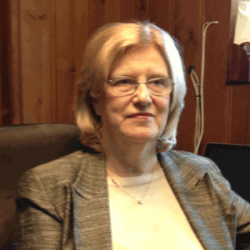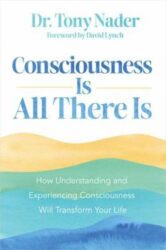Stress, ADHD and Childism

I had never heard of the word “childism” before reading Claudia M. Gold’s review of the book Childism: Confronting Prejudice Against Children by the late author Elisabeth Young-Bruehl.
Young-Breuhl, an analyst, political theorist and biographer, calls attention to the way human rights of children are threatened in America today. Childism is defined as “a prejudice against children on the ground of a belief that they are property and can (or even should) be controlled, enslaved, or removed to serve adult needs.”
These are strong words, hard to apply to the parents I know. Yet when she cites the growing epidemic of ADHD and now bipolar disorder among our nation’s children, and the way that children are routinely medicated into acquiescent behavior, Young-Breuhl can’t help but wonder if children are being properly represented in our society.
She also wonders why children and families are not given more support in our society. The scarcity of social services for kids (and the fact that pediatricians, pediatric child-care workers and school teachers are among the lowest paid professionals in America) are contributing factors to childism.
Not to mention that in other developed countries, there are much lower rates of child abuse and neglect, a phenomenon that Young-Bruehl attributes to the widely available social services available to help troubled children and troubled families. In many other developed countries, she writes, “children have a range of preventative and development-oriented services: universal health care, health services, and parent support services in homes after the birth of a child; maternal and parental leaves for infant care; developmental preschool programs; after-school programs; and economic supports of various kinds.”
While I had never thought of America as being prejudiced against children (on the contrary, I thought of us as being a child-centered society), no one can dispute that parents in this country are pretty much on their own when it comes to raising their kids, even when both parents work outside the home, and even when single mothers earn the living and care for their children at the same time.
As Dr. Gold points out, childism in America is a societal problem, not a failing of most parents. “Most individual parents, given the opportunity to be heard and supported, are not childist,” writes Dr. Gold. “They long to help their children, not merely control them.” Yet when behavioral problems arise, parents are left with few choices.
The problem can be summed up in one sentence of Young-Breuhl’s, that “children whose development is not being supported cannot be protected.” As the great social reformer and statesman Frederick Douglass observed, “It is easier to build strong children than to repair broken men.”
There are, of course, a wide range of causes of health problems in children, such as poor diet, genetics and toxic stress. Toxic stress is defined by Harvard University’s Center on the Developing Child as “severe, uncontrollable, chronic adversity.” Experiencing toxic stress while in the womb or during early childhood can be a major cause of mental and physical illness later in life—and even is thought to disrupt the architecture of the brain. As research on the developing child continues to grow, organizations such as the American Academy of Pediatrics (APA) are pushing for a fundamental change in America’s early childhood policies and services to help prevent the effects of toxic stress on children.
Until that happens, families can take a big step in preventing both everyday stress and toxic stress by learning stress-reduction methods such as the Transcendental Meditation technique. Children are sensitive to a mother’s stress and reportedly have higher stress themselves when the mother is overworked, anxious or depressed. So moms who practice the TM technique twice a day can help reduce stress in themselves and their children.
The Transcendental Meditation technique is easy to learn and effortless to practice, and parents find it’s a powerfully effective stress buster. Research reveals that TM practice produces a state of profound relaxation, much deeper than ordinary rest and accompanied by increased alertness and orderly brain function. Regular practice results in decreased anxiety and depression, reduced insomnia and hypertension.
And for your average kid who may not be suffering from toxic stress, TM is a gentle way to lessen the everyday stress caused by peer pressure, academic competition and family stress. When children meditate, their grades improve without more effort. It makes sense—when your mind is more calm, you can learn without struggle.
TM is also a proven way to reduce ADHD without harmful side effects. Recent studies found that students with ADHD who practice the Transcendental Meditation technique showed significant reduction of ADHD symptoms within three to six months. And girls with ADHD need help just as much as boys. Girls often go undiagnosed and untreated because ADHD symptoms in girls manifest more as a quieter inability to focus rather than the more obvious disruptive behavior typically found in boys with ADHD.
Cognitive learning expert Sarina Grosswald, EdD, has led pioneering research on ADHD and meditation. Dr. Grosswald explains that Transcendental Meditation works very differently from how the drugs work. “Meditation is not a quick fix. But, over time, TM allows the brain to create the neural connections that correct the underlying problem. The drug is an immediate fix because it’s an amphetamine, but when it wears off, the problem remains—the lack of brain integration.”
The TM technique is a cost-effective approach that can be a lifelong tool for managing ADHD and it’s many challenges while improving IQ, academic achievement, and better relationships between children and their peers, family members and teachers. Best of all, unlike medication, the TM technique has no negative side effects.
Other learning disabilities can also be helped through TM, such as dyslexia. Having struggled with severe dyslexia since childhood, Dana Farley, now a college graduate, says, “I had a lot of insecurities when it came to school. Since starting TM in high school, I’m not putting myself down all the time. The negative thoughts just don’t appear. Instead of thinking, ‘I can’t do this’ I’m thinking ‘Why not?’”
Learning the Transcendental Meditation technique is a way to empower children of all ages from within—and that is the opposite of childism.
About the Author
Linda Egenes writes about green and healthy living and is the author of six books, including The Ramayana: A New Retelling of Valmiki’s Ancient Epic—Complete and Comprehensive, co-authored with Kumuda Reddy, M.D.
More Posts by Linda
- Tired and Burned Out? Transcendental Meditation Can Help: An Interview with Dr. Nancy Lonsdorf, MD
- Worried About the Future? Six Ways to Calm Your Anxiety
- What Do You Carry in Your Self-Care Tool Kit?
- Five Strategies for Family Caregivers
- From the Streets to College in Four Months: The Communiversity of South Africa Empowers Underserved Youth in Cape Town





